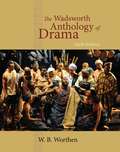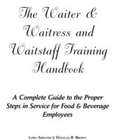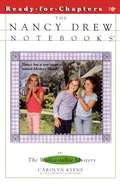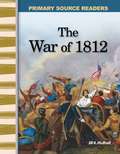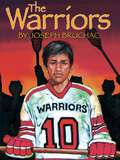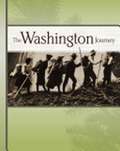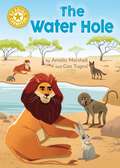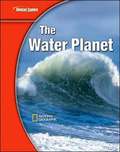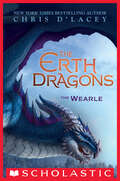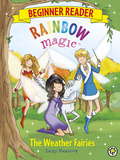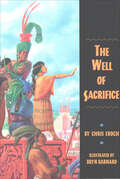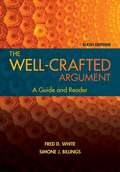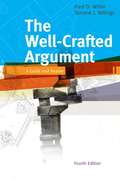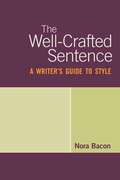- Table View
- List View
The Wadsworth Anthology Of Drama
by W. B. WorthenThe boldest and most distinguished introduction to drama available today, W.B. Worthen's pace-setting text continues to provide exciting plays usefully situated within their historical and cultural contexts. Based on the best-selling WADSWORTH ANTHOLOGY OF DRAMA, the Brief Edition provides many of the important elements of that anthology but in a more streamlined form.
The Waiter and Waitress and Wait Staff Training Handbook: A Complete Guide to the Proper Steps in Service for Food and Beverage Employees
by Lora Arduser Douglas R. BrownSuitable for various food service serving staff members, this work covers various aspects of restaurant customer service for the positions of host, waiter or waitress, head waiter, captain, and bus person. It provides step-by-step instructions on topics such as hosting, seating guests, taking/filling orders, loading/unloading trays, and others.
The Walkie-Talkie Mystery (Nancy Drew Notebooks #43)
by Carolyn KeeneMystery mouth's voice is Nancy's first clue! Nancy has a new set of hot green walkie-talkies to use in busy places like the mail. But when Bess and George try them out, one of the walkie-talkies disappears. Nancy thinks a bratty boy they know may have taken it. Then Mystery Mouth starts sending Nancy messages on the remaining walkie-talkie. Each message contains a clue. Soon Nancy and her friends are on a crazy chase all over town. Mystery Mouth is talking, but it's Nancy who's doing the walking -- to find out who walked off with the walkie-talkie!
The War Of 1812
by Jill K. MulhallIn this engaging nonfiction title, readers will learn about the War of 1812, the causes of it, and how it affected American citizens. Through detailed images, stunning facts, and easy to read text, readers are introduced to ideas and events that took place during this time, including embargoes, the Treaty of Paris, the War Hawks, and the Treaty of Ghent. Readers will have the opportunity to further enhance their understanding of the content through an accessible table of contents and glossary.
The War Rug (Fountas & Pinnell Classroom, Guided Reading)
by Ollie Cuthbertson Robyn TurnerNIMAC-sourced textbook
The Warriors (Exceptional Reading And Language Arts Titles For Intermediate Grades Ser.)
by Joseph BruchacWhen twelve-year-old Jake Forrest's mother gets a job in a new city, everything changes. He has to move away from the Iroquois reservation he's lived on his entire life—away from his aunt and uncle, and away from the friends he plays lacrosse with. The lacrosse coach and players at his new school in Washington, D.C., believe that winning is everything, and they don't know anything about the ways of his people. As Jake struggles to find a place where he truly belongs, tragedy strikes and he must find out who he really is. Can he find courage to face the warrior within—the warrior who values peace and leads other to more noble pursuits than outscoring the opposition?
The Washington Journey
by Gibbs Smith EducationThe Washington Journey is a 7th grade history textbook. The outline for this book is based on Washington's NEW Essential Academic Learning Requirements for social studies and teaches civics, history, geography, and economics. The student edition places the state's historical events in the larger context of our nation's history and has many features such as local images, primary sources, Washington Portraits, timelines, and skill pages based on the EARLs.
The Watch (Fountas & Pinnell Classroom, Guided Reading)
by Javier Joaquin Kate DopirakNIMAC-sourced textbook. Bird's Question Bird finds a watch in the forest, but she doesn't know what it is. Who will tell her?
The Water Hole: Independent Reading Gold 9 (Reading Champion #1076)
by Amelia MarshallThis story is part of Reading Champion, a series carefully linked to book bands to encourage independent reading skills, developed with Dr Sue Bodman and Glen Franklin of UCL Institute of Education (IOE)Reading Champion offers independent reading books for children to practise and reinforce their developing reading skills.Fantastic, original stories are accompanied by engaging artwork and a reading activity. Each book has been carefully graded so that it can be matched to a child's reading ability, encouraging reading for pleasure. Perfect for 5-7 year olds or those reading book band orange.
The Water Planet
by Glencoe Mcgraw-HillDiscover the Flexibility to Teach Science Your Way!. "Glencoe Science: The Water Planet," a module in the Glencoe Science 15 book series, provides students with accurate and comprehensive coverage of middle school National Science Education Standards. Concepts are explained in a clear, concise manner, and are integrated with a wide range of hands-on experiences, critical thinking opportunities, real-world applications, and connections to other sciences and to non-science areas of the curriculum. Co-authored by National Geographic, unparalleled graphics reinforce key concepts. A broad array of print and technology resources help differentiate and accommodate all learners. The modular approach allows you to mix and match books to meet your specific curriculum needs.
The Wearle (The Erth Dragons #1)
by Chris d'Lacey“An exciting read for dragon lovers and fans of d’Lacey’s The Last Dragon Chronicles and Tui T. Sutherland’s Wings of Fire series.” —School Library JournalA Wearle of dragons set out on an expedition from their home planet and was never heard from again. Now, a new Wearle, determined to find the first, has come to the place its creatures call Erth. Gabrial, who still has the blue scales of a young dragon, is eager to prove himself, and to find his missing father. But when Gabrial causes an accident that results in a baby dragon going missing, he’ll have to prove himself worthy of remaining with the Wearle at all.Across the scorch line, most Hom, or humans, live in fear of the dragons. But a boy named Ren is too fascinated to stay away, and will soon find his fate intertwined with that of the dragons. When conflict erupts between the dragons and humankind, Ren does the unimaginable, crossing into dragon territory. Will he be able to gain the dragons’ trust and prevent an all-out war?New York Times bestseller Chris d’Lacey sweeps readers off on an extraordinary adventure bursting with majestic creatures and one boy with the heart of a dragon.“An inspiring tale of friendship, loyalty and wisdom.” —The Guardian“The creative spin on the intersection of dragon history and prehistoric humans is interesting and the action engaging.” —Kirkus Reviews“A rousing adventure with sweeping aerial action scenes and a tense mystery at its center.” —Publishers Weekly
The Weather Fairies: Book 2 (Rainbow Magic Beginner Reader #2)
by Daisy MeadowsLearning to read is fun with the Rainbow Magic Fairies! Developed in conjunction with Early Years reading consultants and based on the most up-to-date educational research, the Rainbow Magic Beginner Readers are the perfect way to introduce your child to the magical world of reading.
The Weaver of Rugs: A Navajo Folktale [Approaching Level, Grade 3]
by Francisca Marquez Lana JonesNIMAC-sourced textbook
The Web Collection Revealed Premium Edition: Adobe Dreamweaver CS6, Flash CS6, & Photoshop CS6
by Elizabeth Eisner Reding Sherry Bishop Jim ShumanYou can now maximize and integrate the design and development power of Adobe Creative Suite 6 with WEB COLLECTION REVEALED PREMIUM EDITION. This one of a kind text features Adobe Dreamweaver, Adobe Flash, and Adobe Photoshop in one resource, and provides practical experience with each software application through projects and learner-friendly tutorials. Also a full chapter on integration demonstrates how to move effortlessly from one application to another, while Power User Shortcuts and New Features icons point out key changes effective with the release of CS6. WEB COLLECTION REVEALED PREMIUM EDITION provides the information and practice you need to build professional-quality Websites, using all three of these Adobe applications! The Data Files used to complete the projects found in the book are now available online. For access information please refer to the directions available in the preface of the book.
The Web Collection: Adobe Dreamweaver CS3, Flash CS3, and Fireworks CS3 Revealed
by Sherry Bishop James E. Shuman Barbara M. WaxerThis comprehensive introductory book provides step-by-step instruction and in-depth explanation on three of today's most widely used Web design and development programs: Adobe Dreamweaver CS3, Adobe Flash CS3, and Adobe Fireworks CS3. Readers gain practical experience with the software as they work through end-of-chapter learning projects and step-by-step tutorials. An integration chapter demonstrates how to move from one application to the other while creating a Dreamweaver Web site that incorporates both Flash and Fireworks files. Full-color illustrations and a user-friendly design combine to create a solid learning experience that reveals how to master the latest features of these popular applications.
The Well of Sacrifice
by Chris Eboch"an exciting narrative with a richly textured depiction of ancient Mayan society...The novel shines not only for a faithful recreation of an unfamiliar, ancient world, but also for the introduction of a brave, likable, and determined heroine." Kirkus ReviewsSet in ninth-century Guatemala, at the height of the Mayan civilization, this is the story of Eveningstar Macaw, a young girl who finds the fate of her city in her hands. When she discovers enemy soldiers in the jungle while she is hunting medicinal herbs, Eveningstar Macaw tells her older brother, Smoke Shell, who saves the city. But the honor conferred upon Smoke Shell and his family turns out for the worse after the death of the king puts him in line to rule. Harsh, highly placed enemies sacrifice Smoke Shell to the gods; then it is up to Eveningstar Macaw to avenge her brother and eventually save herself. Eboch does a good job of balancing the many details of Mayan life with an electrifying--sometimes gory--story. Eboch does not pull back much as she chronicles both the sacrifices and the ritual bloodletting that were part of the Mayan culture. Of course, shocking events won't deter readers who will already be caught up in the excitement that reaches a high-velocity climax as Eveningstar Macaw struggles to avoid the fate her enemies have plotted for her.Booklist, ALA —
The Well-Crafted Argument: A Guide And Reader
by Fred D. White Simone J. BillingsNIMAC-sourced textbook
The Well-Crafted Argument: A Guide and Reader
by Fred D. White Simone J. BillingsThe Well-Crafted Argument equips students with a comprehensive set of skills necessary for writing argumentative essays in a wide variety of contemporary social contexts. Based on a process pedagogy that encourages individual voice and vision, the book introduces models of good writing for inexperienced writers. Divided into two parts, a rhetoric and a reader, it provides instructors and students with a wealth of materials and tools for effective argumentative writing, thinking, and reading.
The Well-Crafted Argument: A Guide and Reader (4th Edition)
by Fred D. White Simone J. BillingsIncorporating new articles, expanded commentary, and the latest changes from the 2009 MLA Handbook and 2009 APA Publication Manual, the 4th Edition of THE WELL-CRAFTED ARGUMENT guides students through the process of writing effective arguments across the disciplines. The two-part structure of this rhetoric/reader includes a complete pedagogical apparatus--with coverage of critical reading strategies, as well as writing, researching, and documenting a topic--and an anthology of readings grouped into nine thematic clusters. In-depth instruction, combined with real student writings, engages students and helps them discover their own voices. The Fourth Edition continues the visual emphasis from the 3rd Edition, while maintaining the authors' practical, skill-building approach. Each chapter in Part I ends with a "Summary," "Checklist," and "Writing Projects," while each cluster in Part II ends with "Connections Among the Clusters," "Writing Projects," and "Suggestions for Further Reading. " These sections encourage students to apply what they've learned and go beyond the classroom if a topic is of particular interest to them. In addition to guidance on drafting and revising arguments, the authors provide a variety of composition strategies, including freewriting, outlining, and shared reading.
The Well-Crafted Sentence: A Writer's Guide to Style
by Nora BaconThe Well-Crafted Sentence is designed to help undergraduates develop facility in writing smooth, clear, fully developed sentences. It is not a grammar book: it does not focus on avoiding or correcting errors, and it makes no attempt to offer a thorough description of English syntax. Instead, it asks students to examine prose written by accomplished stylists, to note the relationship between syntactic structures and their rhetorical effect, and to practice using specific structures that all adult writers can, but only the best writers often do, take advantage of in their work.
